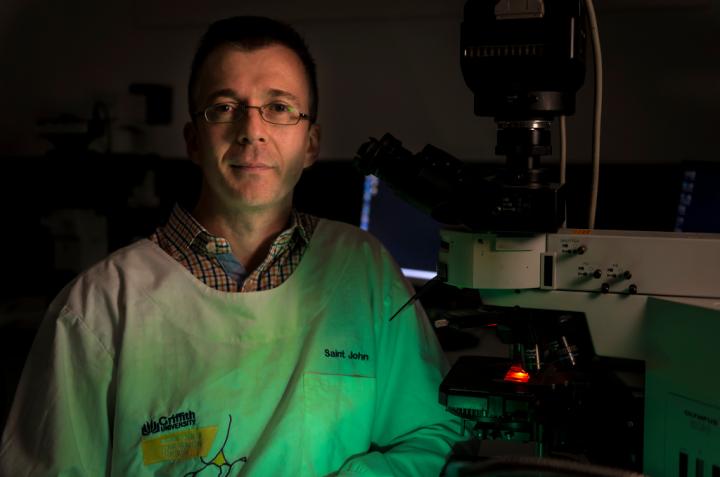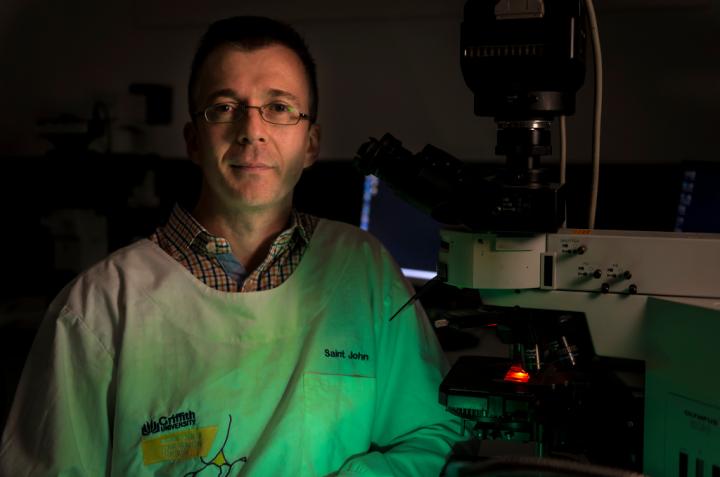
A deadly bacteria that can be picked up by a simple sniff can travel to the brain and spinal cord in just 24 hours, a new Griffith University and Bond University study has found.
The pathogenic bacteria Burkholderia pseudomallei, which causes the potentially fatal disease melioidosis, kills 89,000 people around the world each year and is prevalent in northern Australia and southeast Asia.
Previously, researchers did not understand how the bacteria travelled to the brain and spinal cord, or just how quickly.
The findings, published in Immunity and Infection this week, could mean further discoveries in how the common staphylococcus and acne bacterium also end up in the spinal cord, as well as how chlamydia travels to the brain in Alzheimer's patients.
It could also provide answers for common back problems where bacteria have infected the bone, causing pain that could be simply treated with antibiotics.
In Australia a person with melioidosis has a 20-50 per cent chance of dying once it infects the brain. The bacterium is found in soil in populated areas such as Darwin.
Dr James St John, Head of Griffith's Clem Jones Centre for Neurobiology and Stem Cell Research, said the scary bacteria could slip into your system without you even knowing it.
"Imagine walking around and you sniff it up from the soil and the next day you've got this bacteria in your brain and damaging the spinal cord," he said.
"It can be at a very low level, the body doesn't even know it's there. You could have it and don't know it, that's scary.
"It could just be sitting there waiting for an opportune moment, or it could just be doing small incremental damage over a lifetime. You could lose the function in your brain incrementally."
Together with Associate Professor Jenny Ekberg from Bond University and Professor Ifor Beacham from the Institute for Glycomics, the team studied mice to find that the bacteria travels from the nerves in the nasal cavity before moving to the brain stem and then into the spinal cord.
In Southeast Asia 50 per cent of the population may be positive for melioidosis and in places like Cambodia the mortality rate is as high as 50 per cent.
Associate Professor Ekberg, from Bond's Faculty of Health Sciences and Medicine, said it was frightening how easily and quickly the bacteria could get into the brain.
"But what are the long term consequences? Do the bacteria hide away until sometime later and do little bits of incremental damage, or do they immediately cause full blown infection? We are now working on these questions."
Dr St John said this could be a pathway for many other common bacteria.
"What excites me most is the idea that other bacteria could also use this route," he said.
"Bacteria have been implicated as a major causative agent of some types of back pain. We now need to work out whether the bacteria that cause back pain also can enter the brainstem and spinal cord via the trigeminal nerve".
By discovering the pathway, researchers will now work on ways to stimulate supporting cells that could remove the bacteria.
Dr St John said the work was important as the bacteria had the potential to be used as a bioweapon and knowing how to combat it was extremely important.
Professor Beacham said the olfactory mucosa, located in the nose, is very close to the brain and it had long been known that viruses could reach the brain from the olfactory mucosa.
"Our latest results represent the first direct demonstration of transit of a bacterium from the olfactory mucosa to the central nervous system (CNS) via the trigeminal nerve; bacteria were found a considerable distance from the olfactory mucosa, in the brain stem, and even more remarkably in the spinal cord," he said.
"These results add considerably to our understanding of this particular disease. It seems likely, however, that other bacteria may also transit from nose to CNS, although this has yet to be determined.".
###
The Clem Jones Centre for Neurobiology and Stem Cell Research is located in the Eskitis Institute for Drug Discovery, a centre focused on developing new therapies for infectious disease, cancer and neurological diseases.
The full paper can be found here http://iai.asm.org/content/early/2016/06/28/IAI.00361-16.full.pdf+html
Media Contact
Stephanie Bedo
[email protected]
040-872-7734
@Griffith_Uni
http://www.griffith.edu.au





